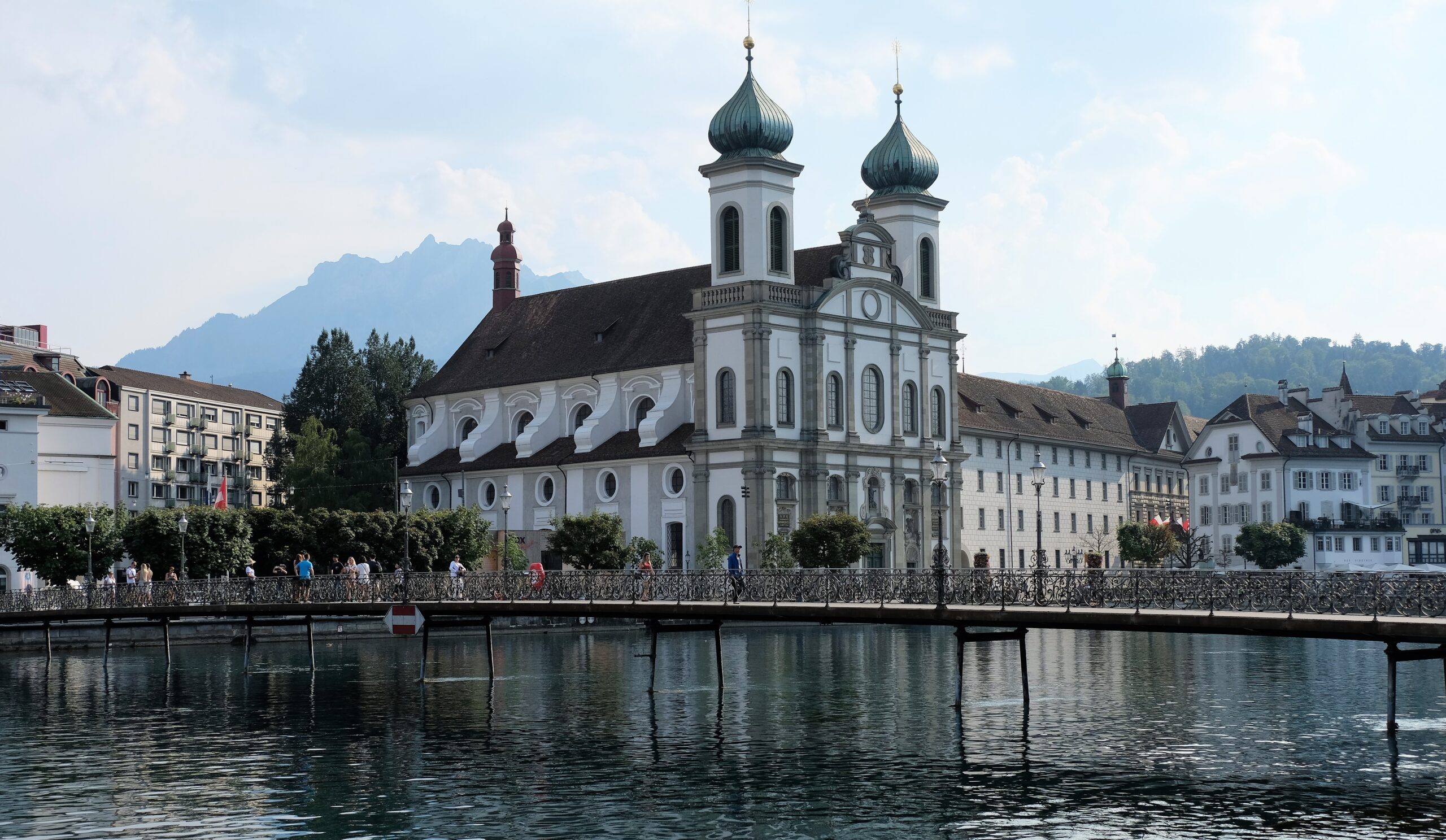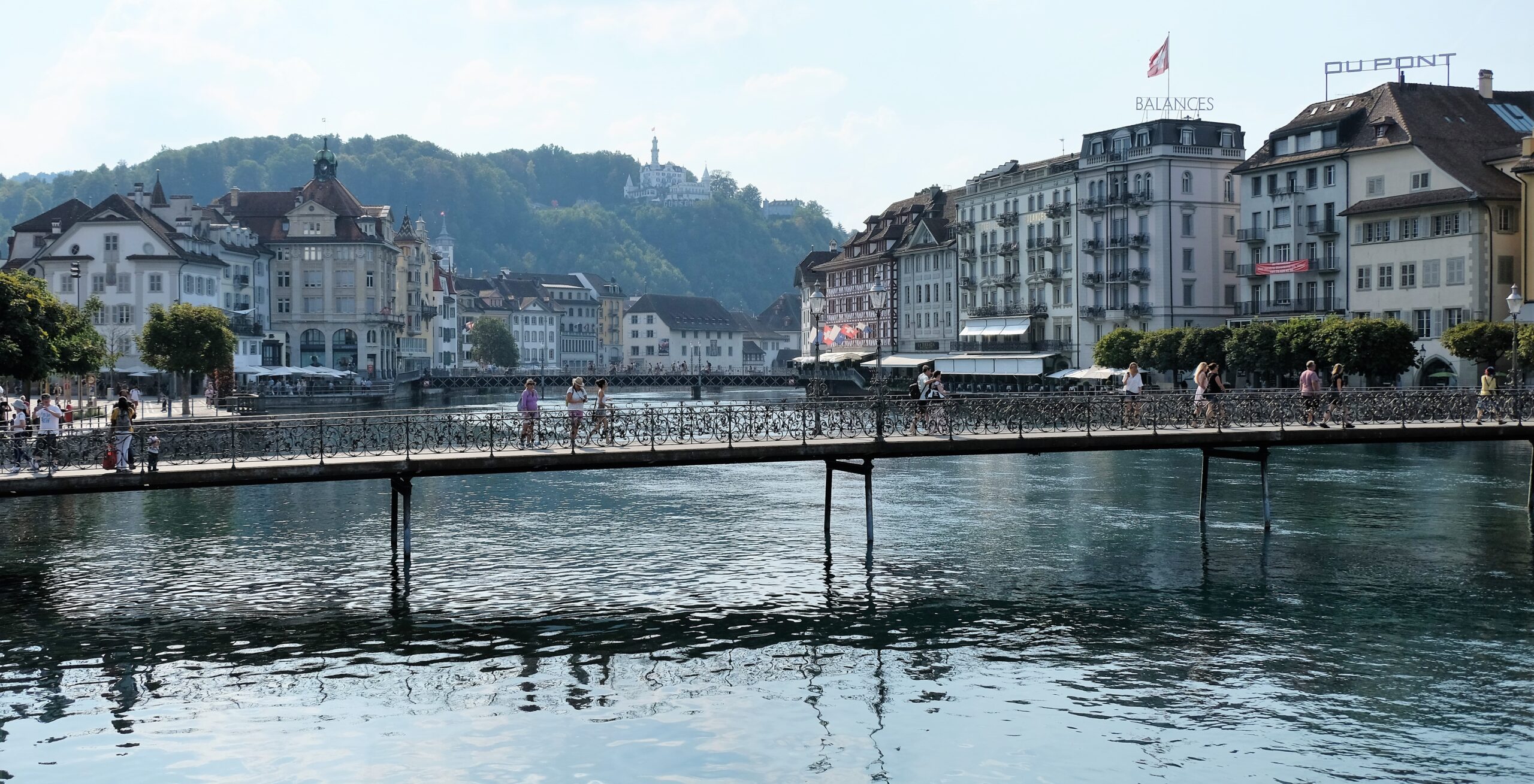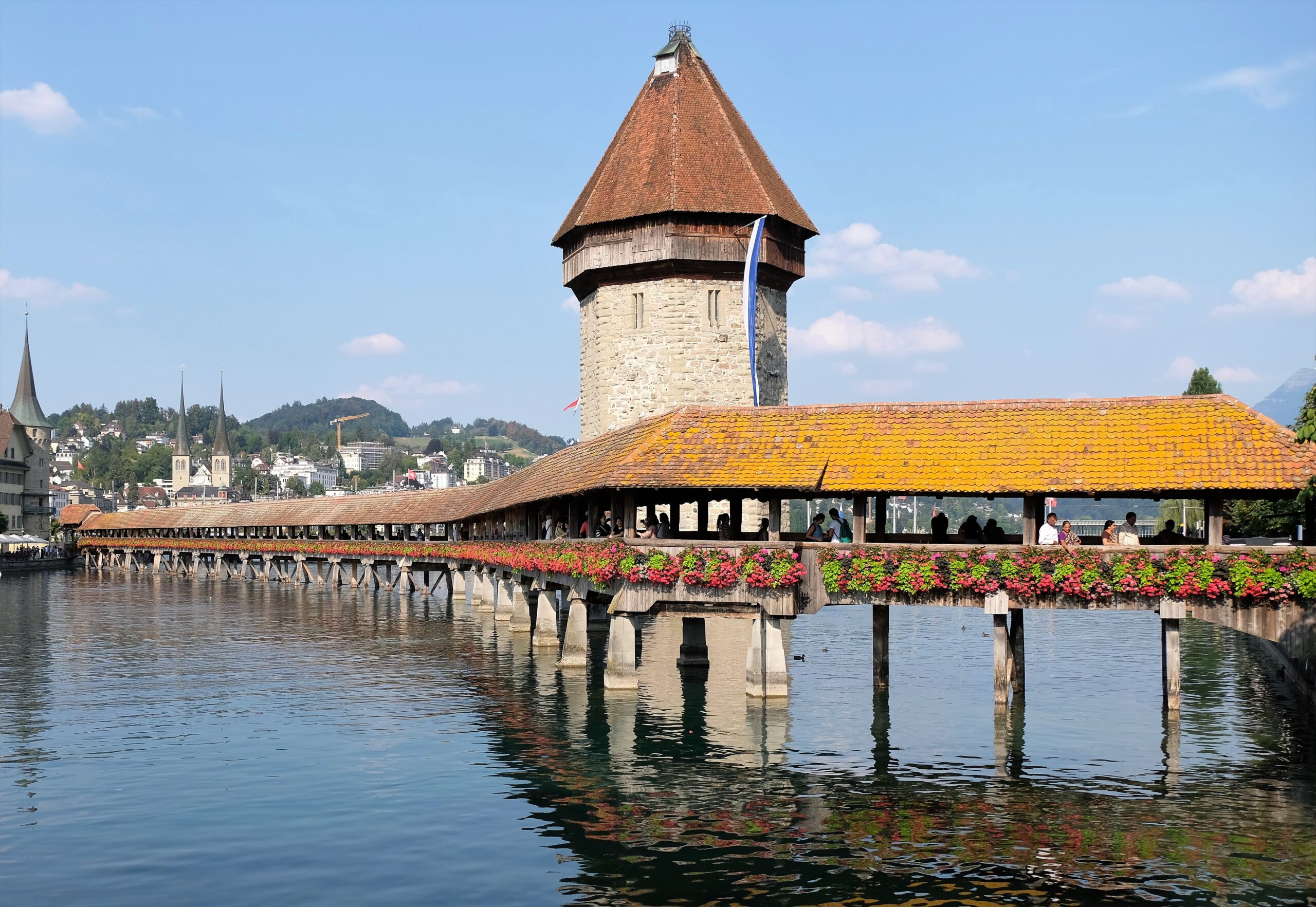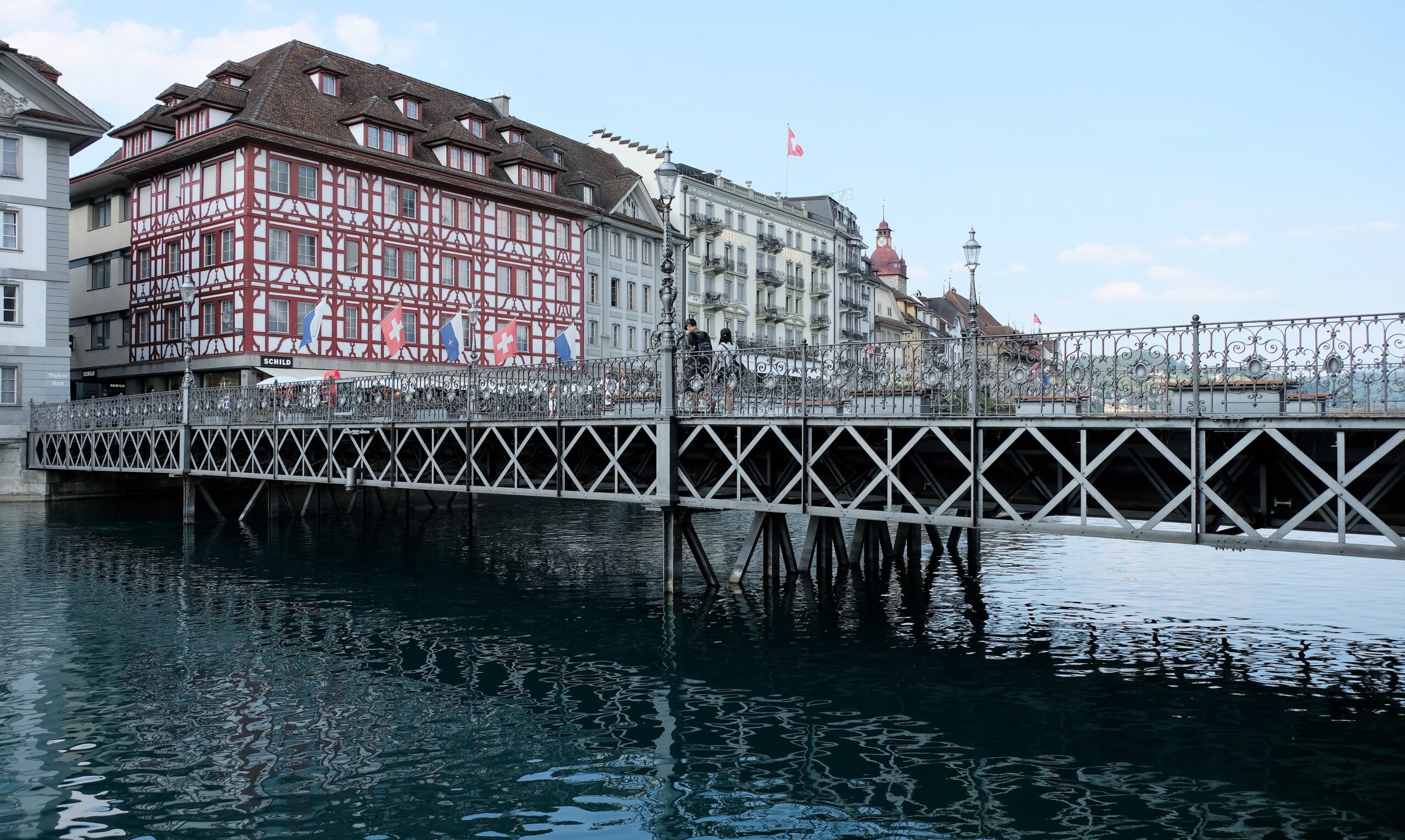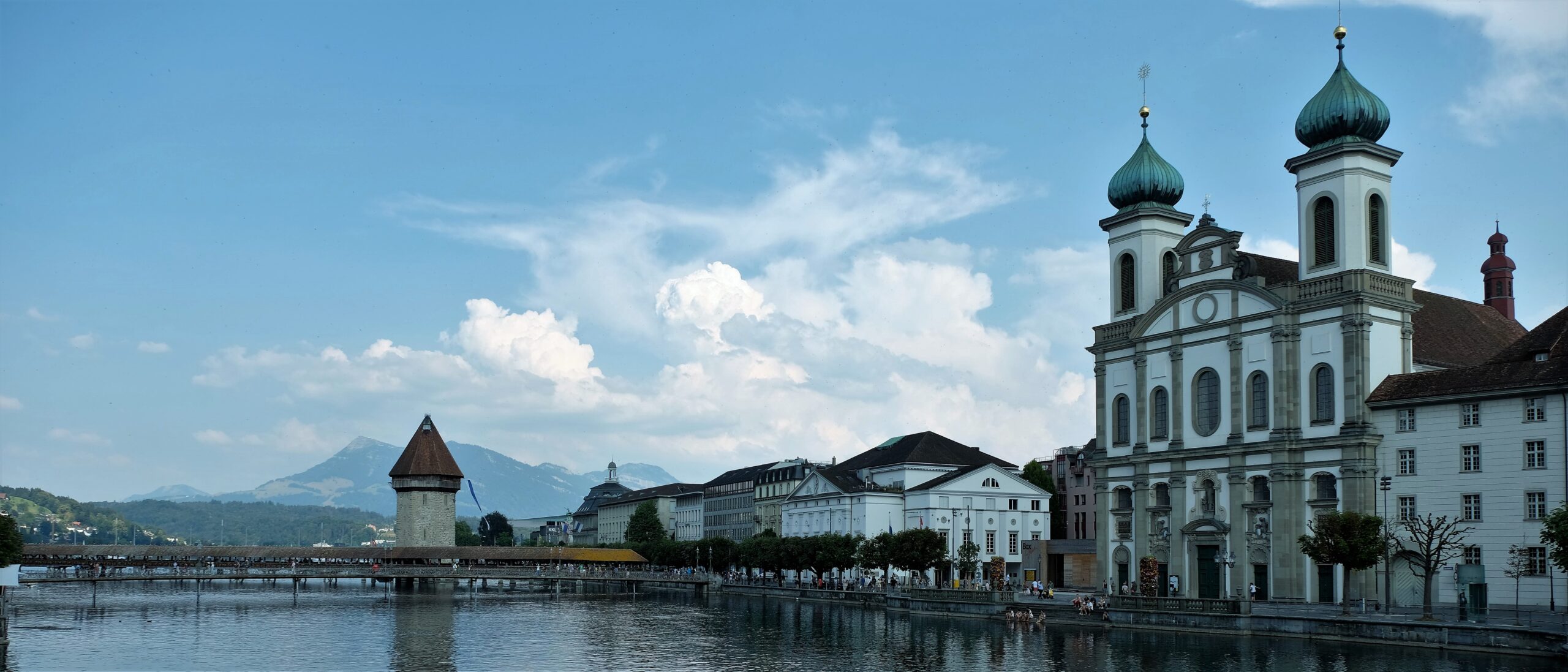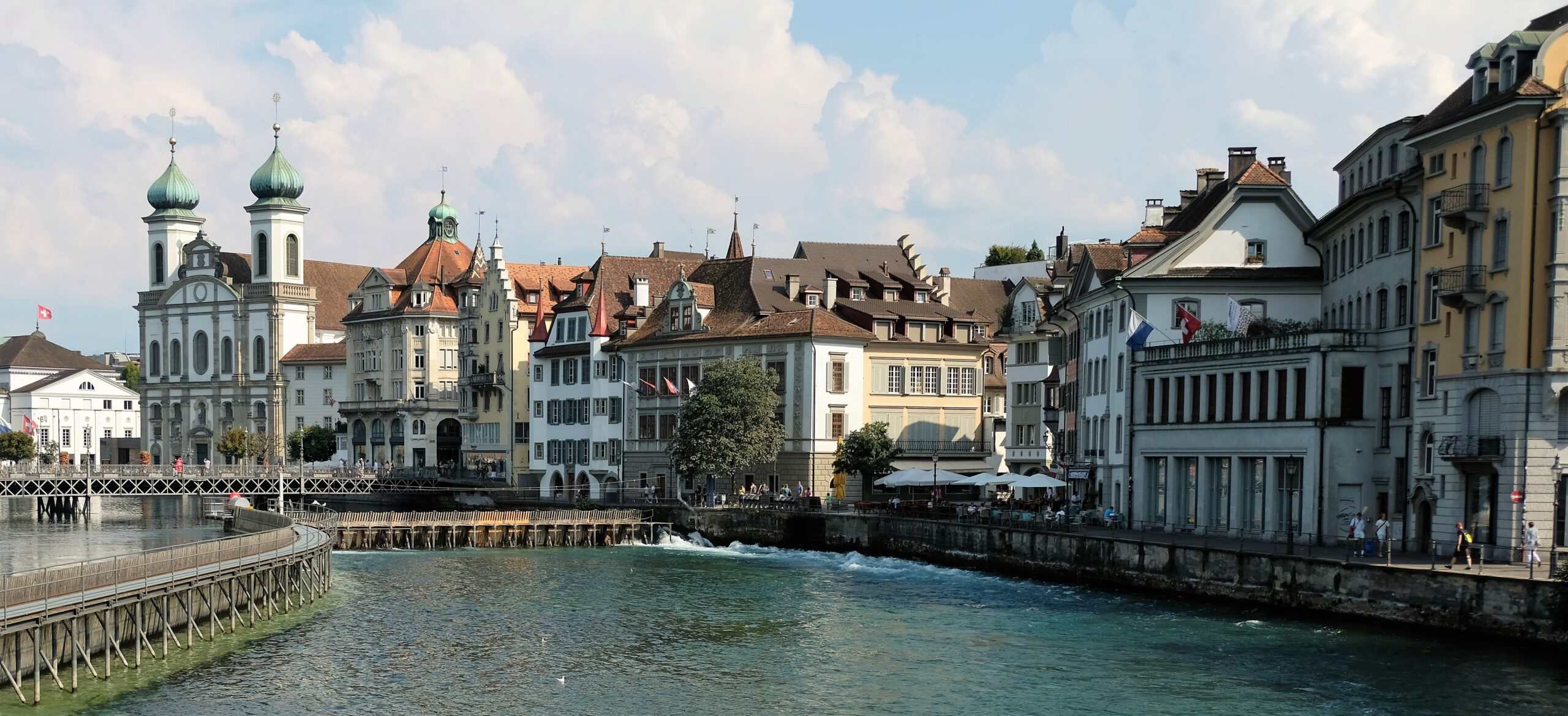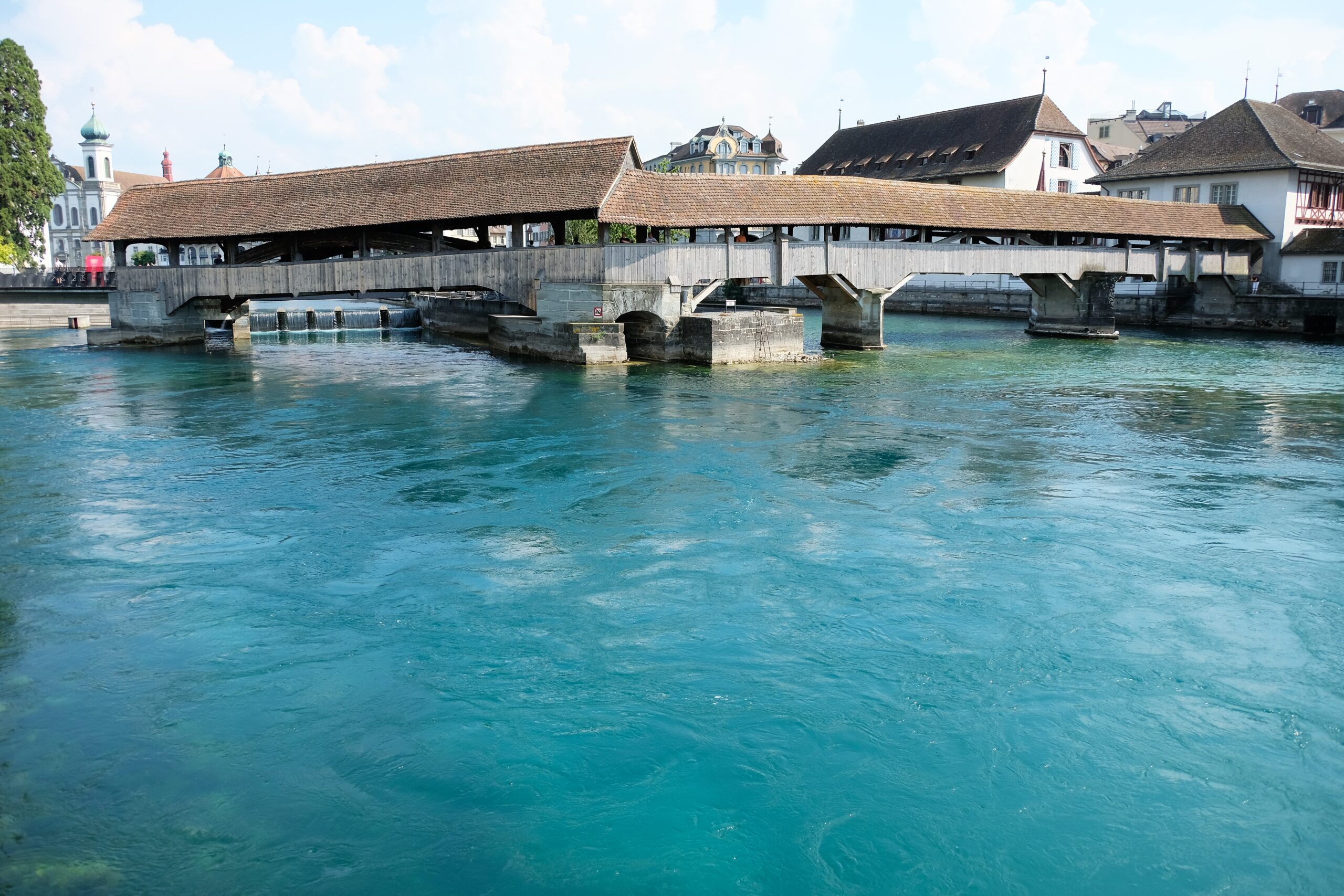Lucerne, or as the Swiss spell it, Luzern was day 2 in Switzerland. Taking the train directly from Zug it only takes 19 minutes, the long train 30 minutes. What a quintessential pretty Swiss city-centre. Like many cities in Switzerland, Lucerne is built around water. Here, the Reuss river takes centre stage. Cutting the city in two, the crisp clear blue water bringing nature and life into the city like an artery from lake Lucerne.
Lucerne / Luzern
Much like Zurich I had not itinerary for Lucerne. My friend Kim suggested I visit. Feeling more positive and less distracted by my mind, getting off the train my mind calmed. Lucerne is the type of place you can sit along the river promenade, eating, drinking, watching the people and enjoy the setting around you. I didn’t do that. Taking advantage of my change in mindset I let my feet take me whichever way the wind was blowing. Not to say that my mindly distractions had vanished. Those thoughtly distractions were diminishing. Feeling better than I had in quite some time, I wanted to take advantage of the reprieve.
…brief history of the Lucern / Luzern
The region grew in prominence after the fall of the Roman Empire. This fall left a vacuum, only to be filled by the Germanic Alemannic, hence the German influence to this day within these parts of Switzerland. By around the 9th century this area was being referred to as Luciaria; possibly originating from the Latin work for pike, lucius. The Reuss river is full of pike.
King Rudolph 1 von Habsburg took rule of the area around 1290, to the distain of the locals. Eventually the cities of Lucerne, Uri, Schwyz, Unterwalden were joined by Zug, Zurich and Bern won their independence from Austrian rule in the 1386 Battle of Sempach. In 1415 Lucerne became a Reichsfreiheit (independent state) from Emperor Sigismund to join the Swiss confederacy.
For over three hundred years, tensions between Catholics and Protestant dominated the political and social landscape from circa. 15th – 18th century. Through the 19th century Lucerne became known for its artist. Richard Wagner lived in the area from 1866. Mark Twain visited twice. Even Queen Victoria visited in 1868.

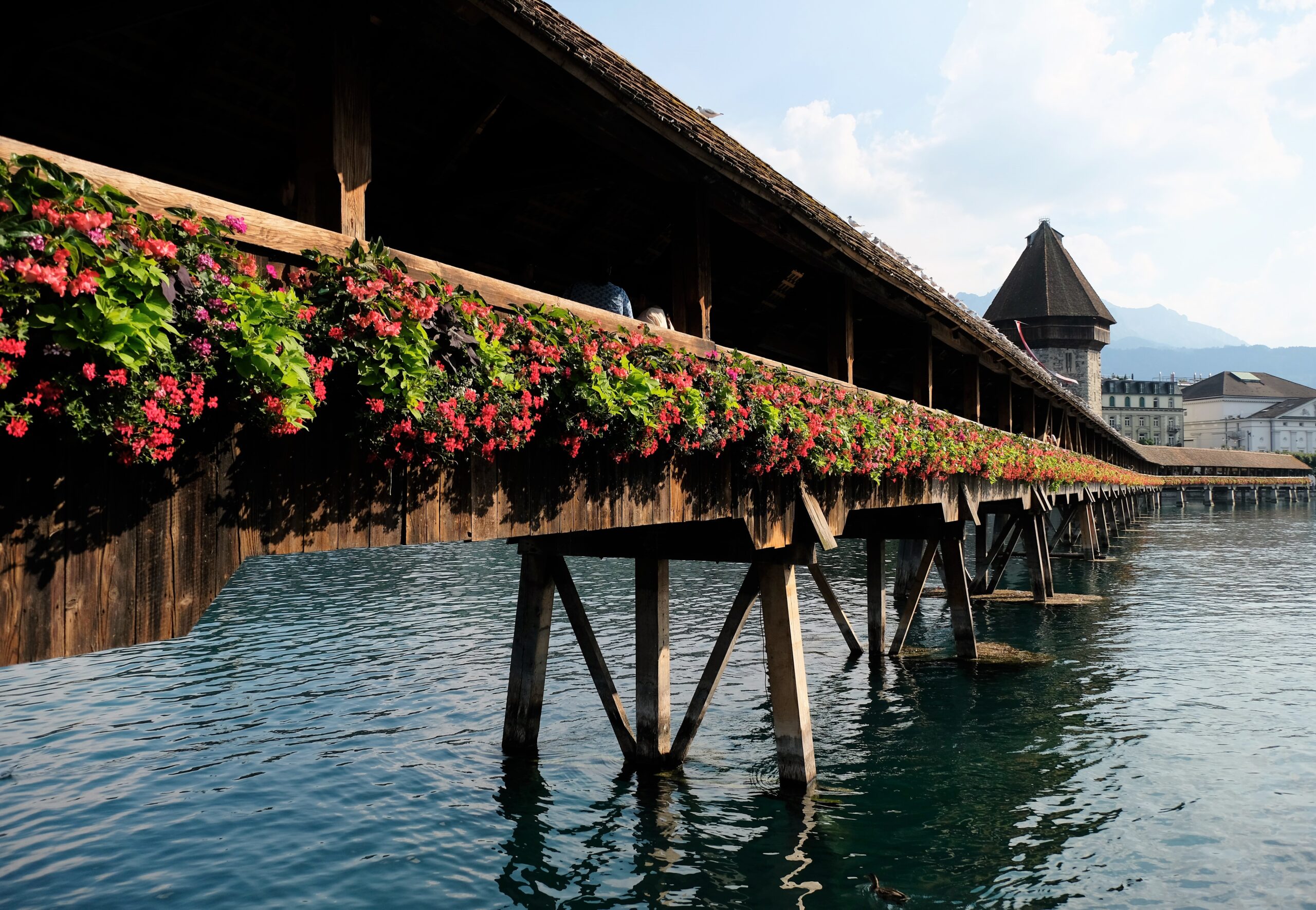
The Lion Monument / Lion of Lucerne
A rather understated monument considering it is visited by around1.4 million people a year. The Lion Monument commemorated the Swiss Guard who killed during the French Revolution in 1792 storming the Tuileries Palace. You wouldn’t think it is one of the most famous monuments in Switzerland. A lion, poignantly, almost precariously lying on a bed of rock, one leg hanging freely off the edge. Set against a vertical rock face at the far end of a clear large pond. This unusual setting gives the monument a tranquil feeling. Where are many other monuments are at arms-reach, here the setting and distance to the monuments adds to its purpose. The Lion Monumnet is dedicated “To the loyalty and bravery of the Swiss”.
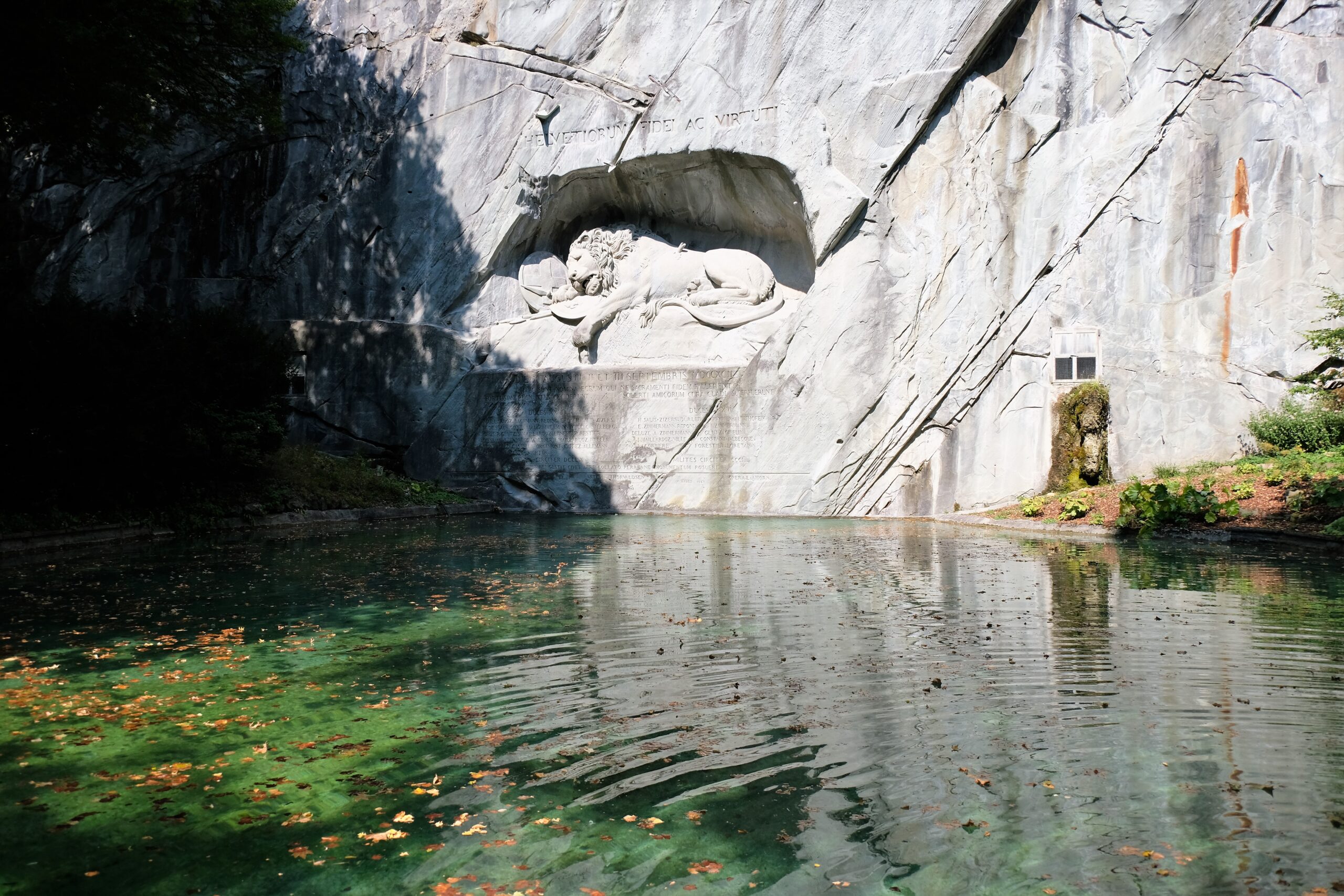
Glacier Garden
It’s not very big, and only takes 20-30 minutes at most to visit. Glacier Garden may not be everyone’s cup of tea, I liked it. Like a giant’s marbles playground. Where the earth has been sanded smooth to eliminate all sharp edges. Once hidden under millions of tones of ice now visible for us to marvel at what time and nature can do. Ravages of time come to mind. Normally this is used in a negative context; here the results of time are soothing an calming. Earth ground and made pliable to the unassuming moving mass of ice. Like the tortoise and hare; the barely moving gigantic mass lets nothing stop its journey. In the end, even mountains for rock succumb to its will. Pulverising terra firma into submission. Leaving in its wake the earth moulded and smooth like a pottery working with clay.
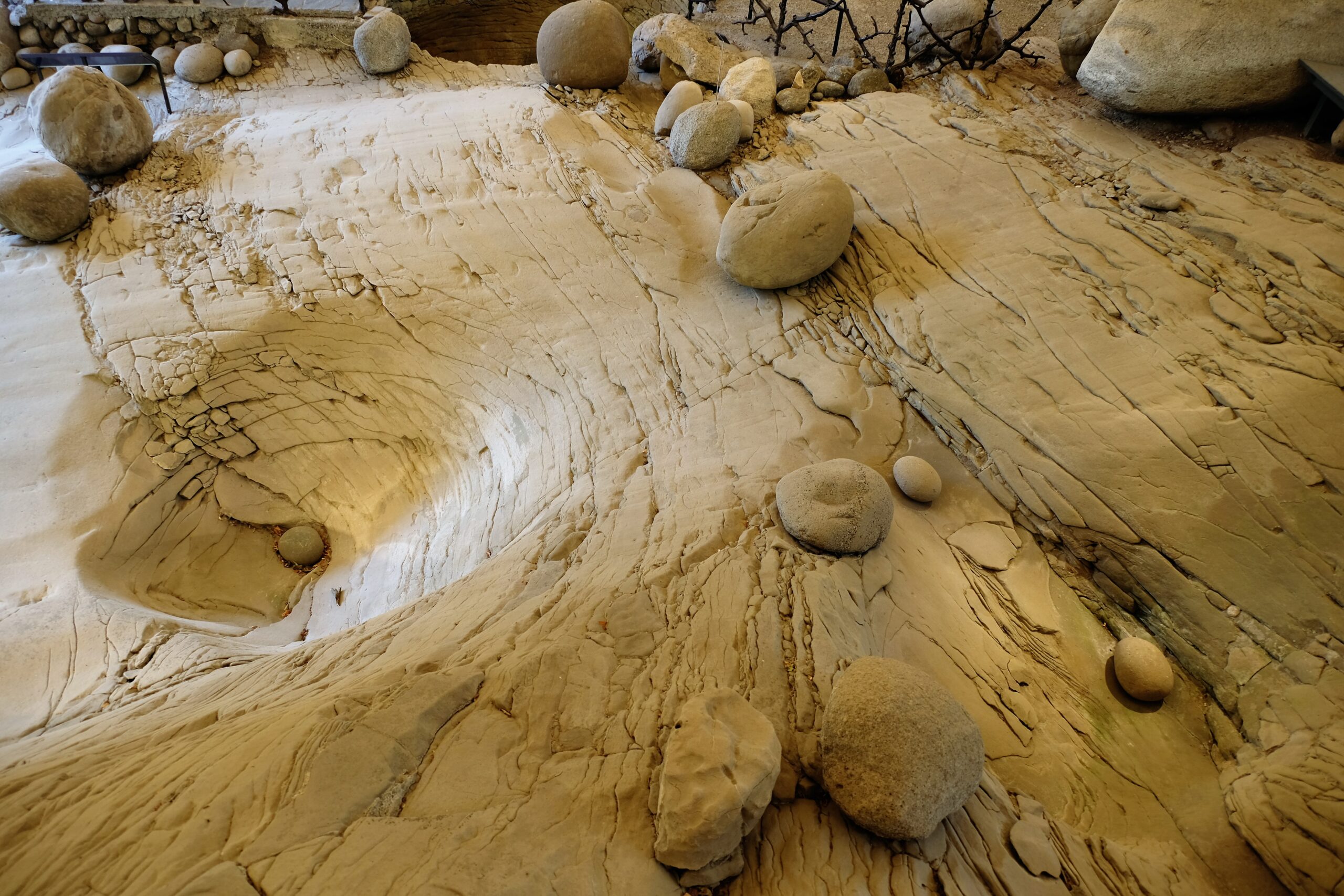

Kapellbrücke / Chapel Bridge
Lucerne’s centre of attraction is Kapelbrucke / Chapel Bridge. Named after the near by St. Peter’s Chapel on the promenade. A water tower, Wasserturm, stands a third across the spanning bridge. Looking like s castle tower, in what once was a castle grounds. The towers seems out of place as it stands adjacent to the bridge, with the bridge being built around it, or to get to it. Why the bridge doesn’t take the shortest (direct) route over the Reuss who knows, though it adds to its charm.

History of Kapellbrücke / Chapel Bridge
The Wasserturm predates the bridge by around three decades. Its exact original use I have no idea, seems like it was part of Lucernes fortifications, as is the reason for building he bridge. Now used as a tourist gift shop, a far cry from some of its previous uses i.e. a prison and torture chamber! First version of the bridge was built in 1365, linking the old and new town of Lucerne. Over the years with the changing river bank the bridge has been gradually shortened; starting at 270m, now 204m.
Two-thirds of the bridge burnt down in 1993, it was rebuilt the following year. Kapellbrücke / Chapel Bridge is the oldest standing truss bridge in the world. Constructed of strutted and triangulated trusses, supported on piles trestles.
Paintings of the Kapellbrücke / Chapel Bridge
The bridge by itself is a standout feature, however the painting in the arches of the bridge is a cherry-on-the-top! Luzern had three bridges, Hofbücke (destroyed), Kapellbrücke and the Spreuervbrücke. What makes them stand out compared to other European counterparts are the interior triangular painted arches. Kapellbrücke has the best examples. Consisting of 158 paintings, 147 survived till the fire in 1993. After the fire, 47 were collected but only 30 were fully restored.
All the paintings represent theological themes and scenes. Painted to promote Catholicism during the Counter-Reformation, by the priest Hans Heinrich Wägmann. Paid for by the city’s council members. As a thank you they would have their coat of arms painted below the picture. Just like politics today, a combination of propaganda and a broadcast of your commitment to the general public of where your allegiances lie. The painting represent a combination of Catholic scenes linked to the history of the Luzern. From Luzern’s patron saint St. Leger to myths and legends of Luzern’s other saint St Maurice. Many depict macabre scenes, with skeletal representations of people dress in normal clothing.
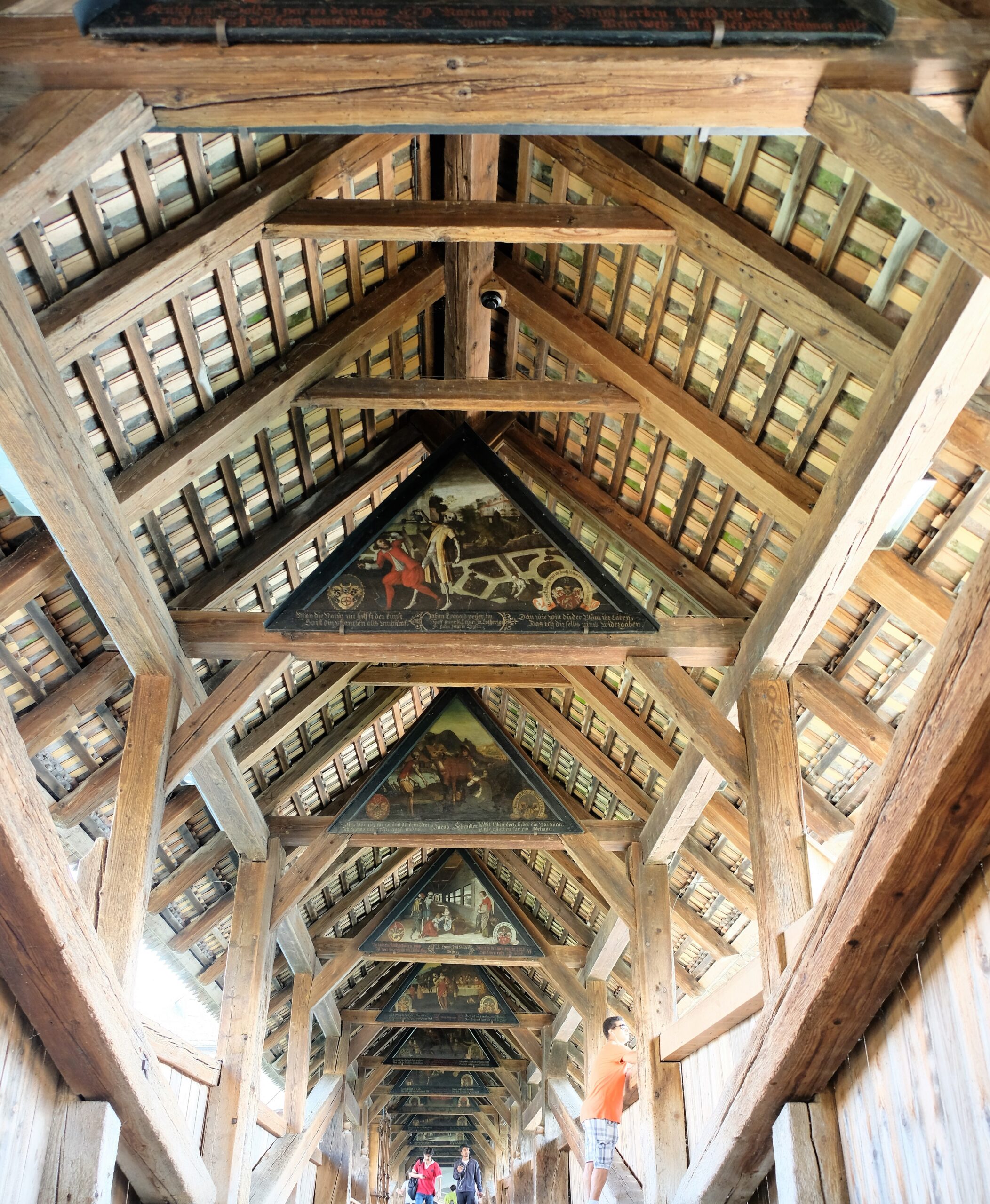

…the rest of the city
Spending a day in Lucerne was a nice way to brush away the cobwebs. I did quite a lot of walking, only including a few places in this blog. I’ll add more photos to my Facebook page. Dotted around the city you can see part of the old city wall, punctuated with towers. Some you can climb up to get great views of the city. All throughout Lucerne are round squat turrets. I didn’t explore any, there are quite few so difficult to miss.
One thing will stick in my mind about Luzern. I was somewhere aloft on a hill, looking down on the Reuss river. A group of kids were playing in the river with tubes. They would jump into the river upstream letting the current take them down along the river. Getting out they would jump on a bus to take them back to the starting point and repeat the process. Just kids, having normal fun in the middle of the city. Can’t say that about most places these days let alone in a city. It was nice to see.
